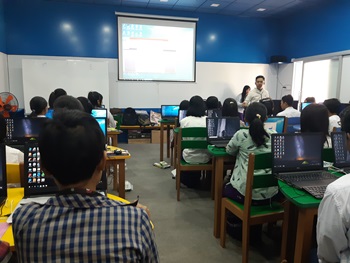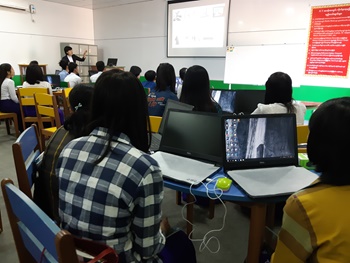As opposed to the traditional form of teaching – where the teacher directs students to learn through memorization and recitation techniques – the focus of the new curriculum is on project-based learning, workplace learning and active learning, developing skills like working together, problem solving, and decision making in students.
"Before, my students were bored very easily, it was a one-way communication: they were just listening to my lectures. Now they participate in learning activities, they are learning by doing. You can see they behave differently now. They have more confidence in themselves and in their knowledge and that's what they need in their future when they are looking for a job. It's changed in a positive way." says Mr. Kyaw Zaw, Teacher SAI Zwekabin.
Another teacher agrees. "Before it was my job to translate the English textbooks for the students and make sure they understand the content through lectures. Now, I have a lesson plan, I can use PowerPoints, I can discuss the content with my students, give assignments and let them work together", says Tin Moe Htut.
This new way of teaching ensures that teachers are continually developing themselves as well. With the building of a new, modern classroom – also funded by this project – teachers and students now have access to the internet. Tin Moe Htutteaches students how to set up an email account, how to use the internet as a source of information, how to use Word. "But my students want to know more. They want to know about programming: how to make an application. I have a degree in IT, but my knowledge is outdated. So I go on the internet and look at YouTube videos about making applications. So I can explain it to them." It is also a great example of the different dynamics between students and teachers. Students can point out what they want to learn and teachers have the skills and means to teach them that knowledge.


Images: Modern classrooms are outfitted with a beamer, printer, laptops and an internet connection. It allows teachers to use digital teaching materials, like PowerPoints and gives students the opportunity to develop ICT skills.
